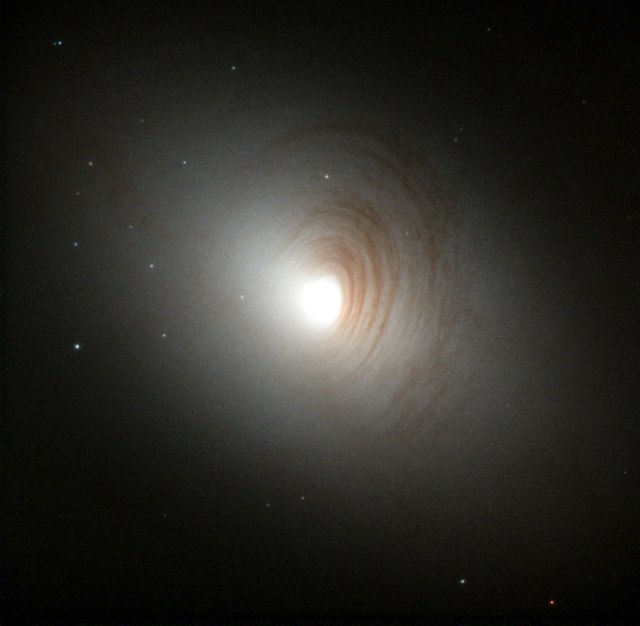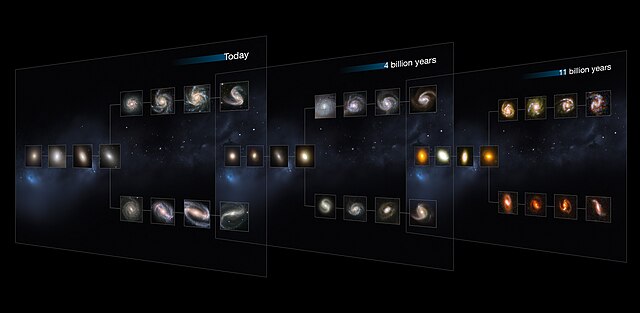A lenticular galaxy is a type of galaxy intermediate between an elliptical and a spiral galaxy in galaxy morphological classification schemes. It contains a large-scale disc but does not have large-scale spiral arms. Lenticular galaxies are disc galaxies that have used up or lost most of their interstellar matter and therefore have very little ongoing star formation. They may, however, retain significant dust in their disks. As a result, they consist mainly of aging stars. Despite the morphological differences, lenticular and elliptical galaxies share common properties like spectral features and scaling relations. Both can be considered early-type galaxies that are passively evolving, at least in the local part of the Universe. Connecting the E galaxies with the S0 galaxies are the ES galaxies with intermediate-scale discs.

NGC 2787 is an example of a lenticular galaxy with visible dust absorption. While this galaxy has been classified as an S0 galaxy, one can see the difficulty in differentiating among spirals, ellipticals, and lenticulars. Credit: HST
SB01 (NGC 2787)
SB02 (NGC 1533)
Hubble image of ESO 381-12
Galaxy morphological classification
Galaxy morphological classification is a system used by astronomers to divide galaxies into groups based on their visual appearance. There are several schemes in use by which galaxies can be classified according to their morphologies, the most famous being the Hubble sequence, devised by Edwin Hubble and later expanded by Gérard de Vaucouleurs and Allan Sandage. However, galaxy classification and morphology are now largely done using computational methods and physical morphology.
Spiral galaxy UGC 12591 is classified as an S0/Sa galaxy.
The Hubble sequence throughout the universe's history
NGC 6782: a spiral galaxy (type SB(r)0/a) with three rings of different radii, as well as a bar.
NGC 7793: a spiral galaxy of type SA(s)d.







